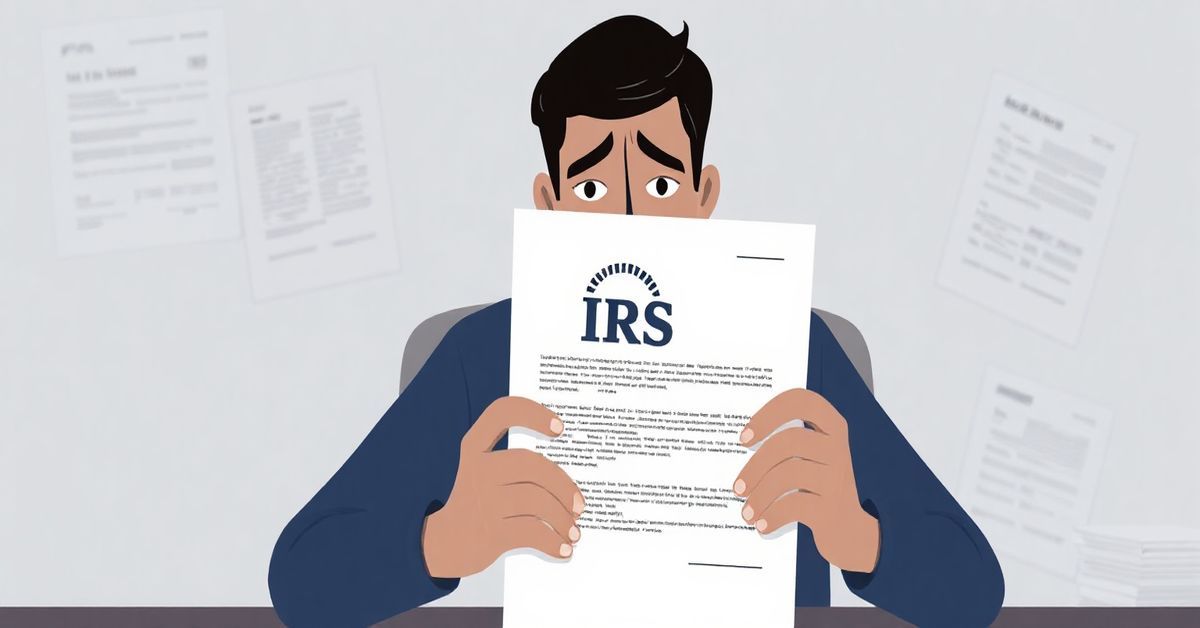Understanding IRS Letter 105C: Claim Denied or Partially Disallowed
Receiving mail from the IRS can be a bit nerve-wracking, especially if it’s a notice like Letter 105C. This letter isn’t a bill, but it does mean the IRS has reviewed a claim you made on your tax return and has decided to deny it or only allow part of it. Let’s break down what this means and what you should do if you receive one.
What Kind of Claims Could Be Denied?
First, it’s helpful to understand what kinds of claims might trigger an IRS Letter 105C. Typically, these claims fall into a few main categories:
- Refund Claims: If you filed an amended return (Form 1040-X) requesting an additional tax refund, the IRS might deny that claim if they believe you were not entitled to the extra refund.
- Tax Credits: You may have claimed a tax credit such as the Earned Income Tax Credit (EITC), Child Tax Credit, or a credit for education expenses. The IRS may disallow the credit in part or in its entirety if they determine you do not meet all the eligibility requirements.
- Deductions: If you claimed certain deductions such as for business expenses, the IRS may have disallowed the deduction completely or reduced it if they think you did not meet the rules.
- First-Time Homebuyer Credit: If you claimed this credit and the IRS disputes your eligibility or the purchase you claimed the credit for, they can deny it.
- Other Specific Situations: There are also many other circumstances in which you may have submitted a claim, and the IRS could deny all or a portion of it.
Why Did the IRS Deny My Claim?
The IRS isn’t out to get you; they have specific reasons for denying or partially disallowing a claim. The letter itself should state the specific reason, but common reasons include:
- Incomplete Information: You may have not provided all the required documents or information necessary to prove your claim. For example, you may have omitted tax forms such as a W-2 or did not adequately document your expenses.
- Ineligibility: You might not meet the specific criteria to claim a credit or deduction. There are income limitations, age requirements, rules about qualifying children, etc.
- Mathematical Errors: A simple error in your calculations could lead to the IRS disallowing the claim.
- Statute of Limitations: There are deadlines to file certain claims. If you filed the claim too late, the IRS will deny it.
- Conflicting Information: If the IRS finds conflicting information (for example, comparing information on your return with information from third parties), this may cause them to disallow your claim.
- Lack of Documentation: The IRS may require you to provide certain proof or documentation to support your claim. For example, if you claim business expenses, they might want to see receipts or invoices.
The IRS will always explain the reason for the denial in the letter. It is critical to read the letter carefully and understand the rationale.
How to Read IRS Letter 105C
Letter 105C typically includes the following:
- Your Information: Your name, address, and taxpayer identification number (SSN or EIN).
- Date of the Notice: The date the letter was issued.
- The Claim Being Denied: A description of the specific claim that was denied, as well as the tax year involved.
- Reason for Denial: A clear explanation of why the IRS decided to deny the claim.
- What You Should Do: Instructions on what action to take if you disagree with the denial.
- Contact Information: IRS contact information and information on how to file a dispute.
- Deadlines: The date by which you should respond if you do not agree with the IRS’s decision.
What Should You Do When You Receive Letter 105C?
Receiving Letter 105C can be disappointing, but it’s not the end of the road. Here’s a step-by-step guide on what you should do next:
- Carefully Read the Letter: The most important step is to read the entire letter very carefully. Understand why the IRS denied or reduced your claim. Highlight the key points and make sure you fully understand the reasoning behind the denial.
- Gather Your Documents: If the IRS states you did not provide enough information, gather all the supporting documents for your original claim. This might include receipts, invoices, bank statements, W-2s, 1099s, medical bills, etc.
- Review Your Original Tax Return: Compare your original tax return with the IRS’s explanation in the letter. Was there a math error, did you use the incorrect form, or did you fail to meet all the requirements for the credit?
- Decide on a Course of Action:
- If You Agree With the IRS: If you realize the IRS is correct, then no further action is needed. The denial or reduction of the claim will stand.
- If You Disagree With the IRS: If you disagree with the IRS, you have a right to dispute the denial. You generally have a certain period of time (usually 30 days or 60 days, depending on the notice) to file an appeal or provide additional information.
- How to File a Dispute: The letter will usually outline the steps you need to take to dispute the denial or reduction of your claim. Typically, this includes:
- Providing Additional Documentation: Send copies of all the documents that support your claim, along with a written explanation outlining why you believe your claim was valid.
- Filing an Appeal: You may need to complete a form such as a Form 1040X, Amended U.S. Individual Income Tax Return, along with supporting documentation, if applicable.
- Responding in Writing: You may be required to respond to the IRS in writing outlining your reasoning as to why the IRS made an incorrect decision. You will typically be required to respond by the deadline listed on the notice.
- Keep Copies: Always keep copies of all correspondence with the IRS, along with copies of all your supporting documentation. This will help you track the progress of your case.
- Consider Professional Help: If you are struggling to understand Letter 105C or you feel your claim should have been allowed, consider getting help from a tax professional. A tax advisor can review your situation, provide expert advice, and guide you through the appeals process.
What if I Ignore IRS Letter 105C?
Ignoring an IRS notice is generally not a good idea. If you disagree with the IRS’s decision, not responding to the notice will likely result in the IRS’s decision being upheld. Ignoring an IRS notice can cause further complications and may impact any future claims you make. Always respond to the IRS within the timeframe they give you and always keep a record of any correspondence.
Common Mistakes and Misconceptions
- Assuming You’ve Done Something Wrong: A denied claim doesn’t automatically mean you’re a bad taxpayer. It simply means the IRS disagrees with your claim based on the information available to them.
- Ignoring the Notice: Never ignore an IRS notice. Even if you don’t understand it, it’s important to respond or seek help.
- Failing to Keep Records: Keeping accurate tax records is critical to successfully navigating tax issues. Keep copies of all documentation for at least three years or longer if you think you may need them.
- Not Seeking Professional Help: If you are unsure of the best course of action, consider seeking professional tax help from a tax advisor.
Final Thoughts
Receiving an IRS Letter 105C can be confusing, but understanding the letter and how to respond is important. Take the time to carefully review the letter, gather any relevant documents, and either accept the IRS’s decision or dispute it using the guidance provided in the letter. And remember, you’re not alone. If you’re overwhelmed, don’t hesitate to seek help from a tax professional.

